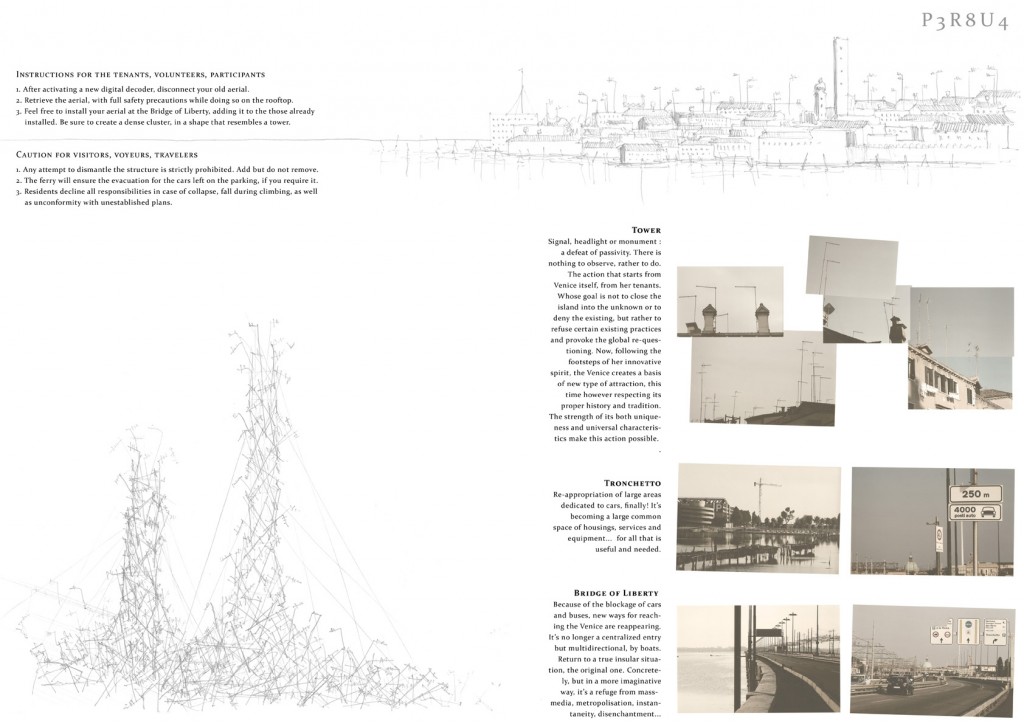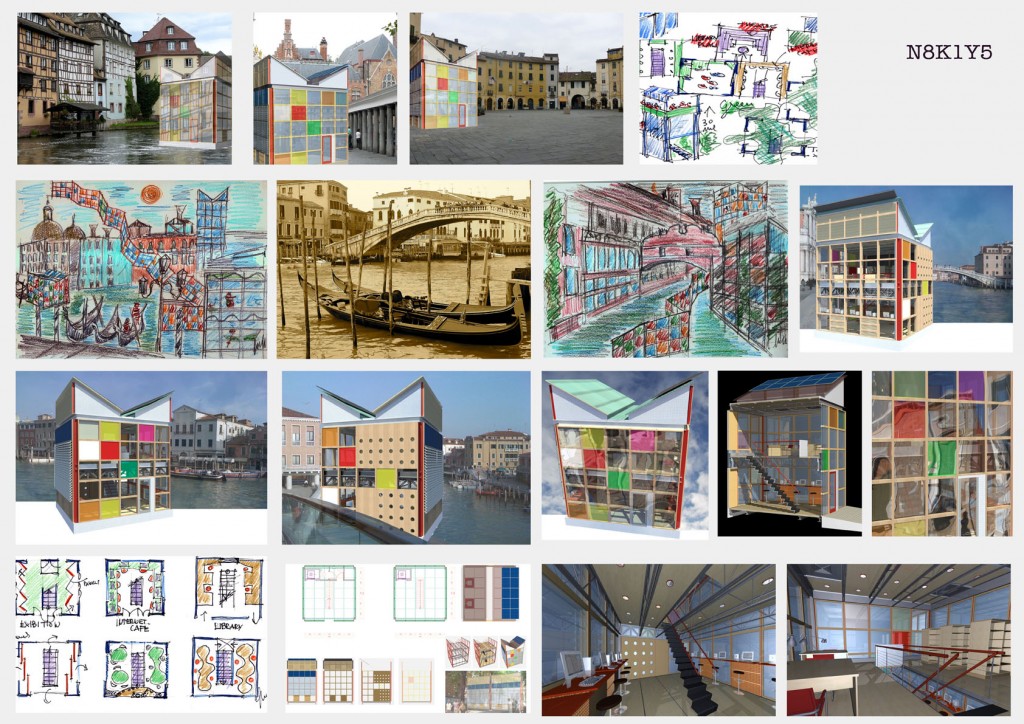Info:
Title: Venice … Water… and Person… - Code: O4F8S1Contest: Venice / 2011
By: Y. Ahn / C. j. Kim / K. Nam
Views: 2641 Likes: 0
Votes:
BJARKE INGELS7 NERI OXMAN8 ELENA MANFERDINI3 MARIA LUDOVICA TRAMONTIN5 BOSTJAN VUGA45.4
Venice … Water… and Person…
The told stories of how the history has been embedded in the old churches, the continuing generations of gondola makers, and the arts that had been created in the heart of Venice undoubtedly illustrate the richness of the Venezia. Gliding on the surface of the sea with the Venetian song being heard in the background, Venice has been known for the romance and the spirit of arts. In the core of this place is the sea, the water.
However, between the Venetians, the water, and Venice is the absence of intimate communication and the lack of mutual relationship to each other. There are limited ways of connecting the three entities in one definable way. Currently, the original spirit of Venetians has been neglected to fuel the increasing profit of the tourism. Moreover there is an absence of public place for people to directly engage with the water and the lack of attempts to preserve the water, which is the notable characteristic that makes the city so different and interesting compared to the other places.
Currently, the “city of water” is in fact not what the “city of water” should be.
The proposal addresses the absence of such relationship so that the people, the water, and the land of Venice can form the mutual communication that enhances the uniqueness of Venice. Ultimately providing the visionary strength in the future. In other words, the way to make Venice the true “city of water.” Using the natural method of treating the polluted water structured along the landscape, the proposal suggests to build new land areas that can inhabit various programs.
The bicycle and the pedestrian paths along the existing canal lines provide linear public space for people to visually and physically experience the sea other than just riding on the boats. These also decrease the travel distance from one place to another within the neighborhood. The greeneries inhabiting the paths take part in purifying the water that is being used to generally provide clean water and also to entertain the children’s water area, which is the result of the level difference between the two types of path along the west coast of San Marco. By varying the heights of these paths, the people are being invited to take advantage of the purified ocean water. Purposed towards the children as the entertainment area, these spaces add the dynamic movement to the bikers and the pedestrians as well. The garden at the south coast of Castello also reinforces the idea of incorporating green public space to Venice.
The square that steps down into the shallow water appreciates the purified water from the treatment system and lets the people to take advantage of their original asset, which is the sea. The cantilevered deck next to them is designed to be opened for the various performances including the cultural events and the religious ceremonies. The area that connects Dorsoduro and Giudecca boldly outlines the boundary of the new residential complex that would ease the diminishing number of local residential areas in Venice. The vast amount of plants and trees that create the marshland purifies great amount of the contaminated water due to the method of the treatment system that uses the ecological processes of trees and plants. The residential area then becomes the independently sustainable landscape that provide the view, energy, and the purified resources to the people in Venice.
Restoring the aspect that made Venice as the unique and vibrant city with the ocean water close to daily lives, the mutual communication and beneficial influence between the land of Venice, Venetians, and the Sea can be obtained.
Info:
Title: Venice … Water… and Person…
Time: 6 giugno 2011
Category: Venice
Views: 2641 Likes: 0
Tags: C. J. Kim , Castello Venice , Dorsoduro , Giudecca , K. Nam , Republic of Venice , San Marco , Venetian , Venice , Water , Y. Ahn








